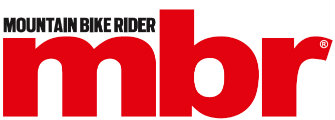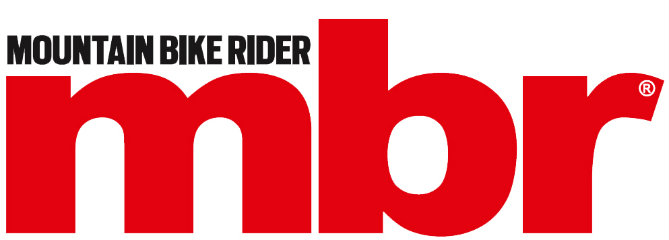Chinese motor brand DJI publishes an eight point statement criticising the 750W max power recommendation, arguing that a more nuanced approach is required, while also reaffirming commitment to established rules and guidelines.
DJI has issued an official response to the recommendation from German bike industry body Zweirad Industrie Verband (ZIV) to cap motor power at 750W. The detailed reply, from the drone brand and manufacturer of the game-changing Avinox motor, makes a number of salient points regarding the proposals, which are still a long way from becoming law in the EU. DJI claims that the advisory 750W limit does not have ‘a clear theoretical foundation’, and that an appropriate power limit needs to be determined through ‘thorough and comprehensive discussions’. While DJI doesn’t make the link, some industry figures have described the proposed legislation as a campaign to keep German manufacturers competitive. A view given credence by the fact that Bosch’s latest power upgrade for the gen 5 CX motor is set at exactly 750W.

The Amflow PL Carbon has shaken up the e-bike market since its launch last July.
“Exploiting user needs”
Further down the statement, DJI is particularly scathing about ‘certain practices’ within the industry ‘exploiting user needs’, with ‘subscription-based fees or offering superior performance or features exclusively for premium models’. It doesn’t take Sherlock Holmes to work out this is referring to Specialized’s decision to offer two versions of its latest motor in the Turbo Levo, with only the ultra-premium S-Works model getting the full performance, using software to limit the power of the lower price models.

Specialized has taken a lot of flak for its controversial two-tier approach to power on the new Turbo Levo.
There are further points about recognising the needs of e-cargo bikes, and vulnerable user groups that may need more power, and DJI also highlights the technology it has developed in the Avinox motor to modulate power, reduce component wear, and ensure its product is not just chasing huge numbers on the dyno.
It’s also worth reiterating that, to conform to EPAC (electric pedal-assist cycles) rules, all e-bikes must already only assist the human pedalling input up to 25kph, and that the addition of any kind of throttle is not allowed.

A plethora of new DJI-powered e-bikes has just launched, with more probably on the way.
DJI statement in full
1.The proposed restriction of 750 W does not appear to have a clear theoretical foundation justifying why this specific limit has been chosen. We believe it is essential for the industry to engage in more thorough and comprehensive discussions to determine an appropriate power limit.
2.The imposition of a 750 W limit may overlook the needs of certain vulnerable groups, including individuals with disabilities who require enhanced assistance, those with higher body weights, minors, and users of e-cargo bikes for transporting supplies, where often involve loads up to 400 kg, necessitating additional support when navigating inclined terrains. We urge policymakers to consider these unique requirements in their deliberations.
(Additionally, It is also important to recognize that in scenarios involving e-cargo bikes, users with higher body weights etc., the riding speed tends to be significantly lower than the speed limit. Consequently, the associated kinetic energy and the likelihood of potential injuries remain low and within acceptable safety standards.)
(E-Cargo bikes might need to be discussed separately, as there might be a separate classification for e-cargo in the future? We support the establishment of more nuanced classifications and standards within the industry, rather than imposing a blanket lower power restriction across the board. It is our position that a tailored approach would better address the diverse needs and applications within this sector.)
3.Our pursuit of enhanced power is driven by the goal of improving the riding experience (while maintaining a balance between the wear and cost of easily worn components), rather than merely increasing power for its own sake. For instance, the Avinox’s power output is intelligently modulated, automatically decreasing power and torque during gear shifts. This strategy extends the life of the transmission system, ensuring an optimal balance between performance, safety, and reliability.
4.It is crucial to remain critical regarding certain practices within the industry that are exploiting user needs, where certain manufacturers differentiate their products by imposing subscription-based fees or offering superior performance or features exclusively for premium models, despite identical hardware components. They profit primarily through software limitations. This highlights the critical importance of prioritizing genuine user needs and maintaining transparency in product offerings.
5.We recognize the need for more adaptable solutions for eMTB riders, including scene-based power modes and user-adjustable settings, which we have successfully developed and implemented. These features allow users to tailor the power mode (including the highest power setting) to meet varying situational demands, such as requiring greater power when starting the ride or ascending hills, thereby enhancing the overall riding experience within legal speed limits. This innovation has been widely validated in the market.
6.We’re closely monitoring the EU regulations and we are committed to adhere to established guidelines. We are also committed to providing our users with support in light of any regulatory changes that may impact our products. Should such circumstances arise, we will ensure that our end users and OEM bike brands have access to the necessary resources and guidance for adaptations.
7. Avinox represents more than merely power output; its innovation is reflected in various features, such as its compact size and lightweight design, impressive power-to-weight ratio, seamless software-hardware integration, advanced smart-assist algorithms, lightweight yet high-capacity battery, rapid charging capabilities and more. All these elements underscore Avinox’s commitment to enhancing user experience and exemplify our dedication to innovation.
8.Since its launch, Avinox has swiftly garnered acclaim from OEM bike brands, users, and top tier media outlets and organizations, underscoring the importance for the industry to heed these voices.

DJI’s latest update for the Avinox motor includes full-time access to 1,000W, and it’s clear the Chinese brand doesn’t believe in sitting on its hands when it comes to development.
DJI updates Avinox motor and firmware with more power and new features
As we reported last week, DJI updated the firmware for owners of bikes such as the Amflow PL Carbon with the Avinox motor to give the maximum 1,000w peak power in Turbo mode. This was originally only in the beta-testing phase, but from today it is now being offered to all owners through the main Avinonx app.
Some of the highlights from this update include the potential to access 1,000W from the motor in Turbo – previously this was only available in limited bursts in Boost mode. Furthermore, the duration of Boost mode can now be customised, the display can be configured with up to eight parameters, and there is now support for the connection of lights. DJI has also improved the sync to Strava, further enhanced hill start assist and walk modes, and added support for something called SmoothShift. DJI says this requires SRAM Eagle Transmission, but we’re not quite sure whether it’s an auto-shift system, or a way of reducing torque while shifting to reduce wear and enhance smoothness.
This update is available now, and DJI recommends you update both the app and the firmware on the bike to ensure compatibility.




